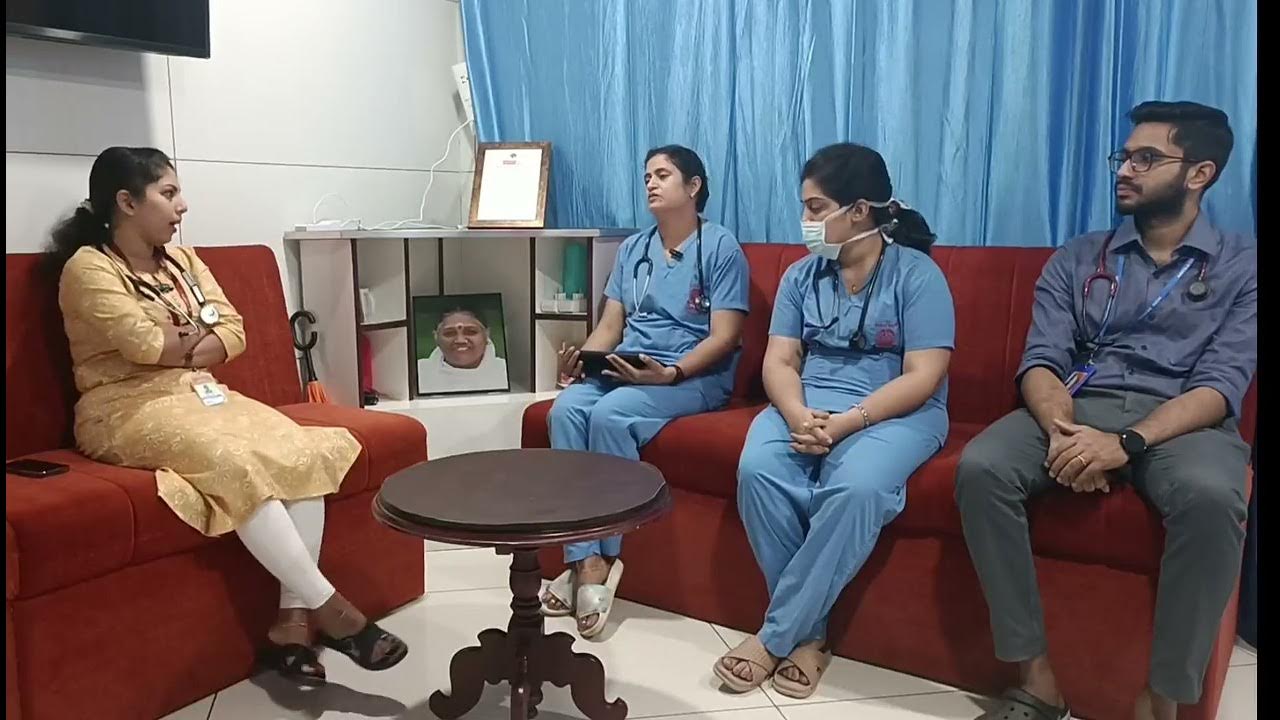Case Discussion || Malaria
Summary
TLDRThis medical case discussion details the evaluation and management of a 37-year-old male presenting with fever, chills, and associated symptoms following recent travel to Odisha. Initial assessments ruled out severe complications, and differential diagnoses included urinary tract infections and malaria, confirmed by a positive rapid antigen test. The treatment involved intravenous paracetamol, doxycycline, and artesunate for malaria, emphasizing the importance of appropriate care and follow-up for potential complications. The session highlights the critical approach in emergency medicine when handling febrile patients, especially with travel histories to endemic regions.
Takeaways
- 😀 A 37-year-old male presented to the ER with fever, chills, and other symptoms for 2-3 days.
- 💉 Initial assessment showed stable vital signs: BP 100/60 mmHg, pulse 86 bpm, and oxygen saturation 98%.
- 🩸 Patient history included recent travel to Orissa, indicating potential exposure to infectious diseases.
- 🦠 Differential diagnoses for fever and chills include urinary tract infection, pneumonia, malaria, and others.
- 🩺 During the examination, there were no signs of jaundice, clubbing, or edema, indicating specific conditions were less likely.
- 🔬 Initial lab tests indicated leukopenia (WBC count of 3000) and elevated CRP (59), prompting empirical antibiotic treatment.
- 🧪 A rapid antigen test confirmed malaria, leading to the initiation of specific treatment for the infection.
- ⚕️ The gold standard for diagnosing malaria includes thin and thick blood smears, with rapid tests being commonly used.
- 📈 Common complications of malaria include cerebral malaria, hypoglycemia, lactic acidosis, and renal failure.
- 🗓️ Treatment for malaria typically includes artesunate and primaquine to prevent relapse, requiring adherence to a 14-day regimen.
Q & A
What were the initial complaints of the 37-year-old male patient?
-The patient presented with fever, chills, and malaise for 2-3 days, along with symptoms such as headache, nausea, vomiting, and myalgia.
What were the vital signs observed during the initial assessment?
-The patient had a respiratory rate of 18 per minute, oxygen saturation of 98% on room air, blood pressure of 100/60 mmHg, and a pulse rate of 86 per minute.
What is the significance of a GCS of 15 in this patient?
-A GCS (Glasgow Coma Scale) of 15 indicates that the patient was fully conscious and oriented, suggesting no significant neurological impairment at the time of examination.
What common differential diagnoses were considered for the patient's symptoms?
-The common differential diagnoses included urinary tract infection (UTI), pneumonia, malaria, and sepsis, particularly given the patient's recent travel history.
What were the results of the rapid malarial antigen test?
-The rapid malarial antigen test came back positive for Plasmodium falciparum, confirming the diagnosis of malaria.
What treatment regimen was initiated for malaria?
-The patient was started on Artemisinin-based combination therapy (Artis 120 mg, followed by 60 mg per day for 6 days) and Primaquine 15 mg daily for 14 days to prevent relapse.
What complications are associated with malaria as mentioned in the discussion?
-Complications of malaria can include cerebral malaria, hypoglycemia, acute respiratory distress syndrome (ARDS), acute kidney injury, and hemolysis leading to anemia.
Why is it important to take a thorough travel history in patients presenting with fever?
-A thorough travel history is crucial because it can help identify potential exposures to infectious diseases such as malaria, which can significantly affect diagnosis and treatment.
What laboratory findings supported the diagnosis of malaria in this patient?
-The laboratory findings included mild anemia (hemoglobin 11), a WBC count of 3,000, and positive results from the rapid malarial antigen test.
What is the role of Primaquine in malaria treatment?
-Primaquine is used to prevent relapse of malaria by targeting the hypnozoite stage of Plasmodium vivax and Plasmodium ovale; in this case, it was given to prevent any potential relapse after treating the acute infection.
Outlines

Cette section est réservée aux utilisateurs payants. Améliorez votre compte pour accéder à cette section.
Améliorer maintenantMindmap

Cette section est réservée aux utilisateurs payants. Améliorez votre compte pour accéder à cette section.
Améliorer maintenantKeywords

Cette section est réservée aux utilisateurs payants. Améliorez votre compte pour accéder à cette section.
Améliorer maintenantHighlights

Cette section est réservée aux utilisateurs payants. Améliorez votre compte pour accéder à cette section.
Améliorer maintenantTranscripts

Cette section est réservée aux utilisateurs payants. Améliorez votre compte pour accéder à cette section.
Améliorer maintenant5.0 / 5 (0 votes)






